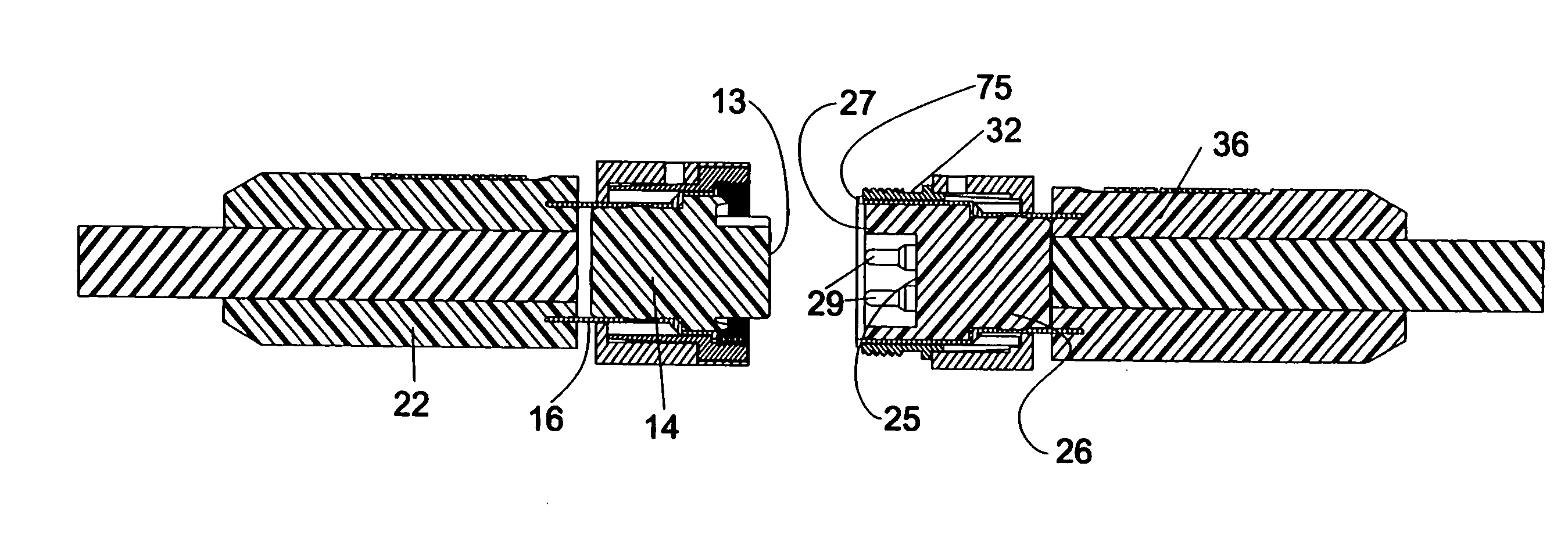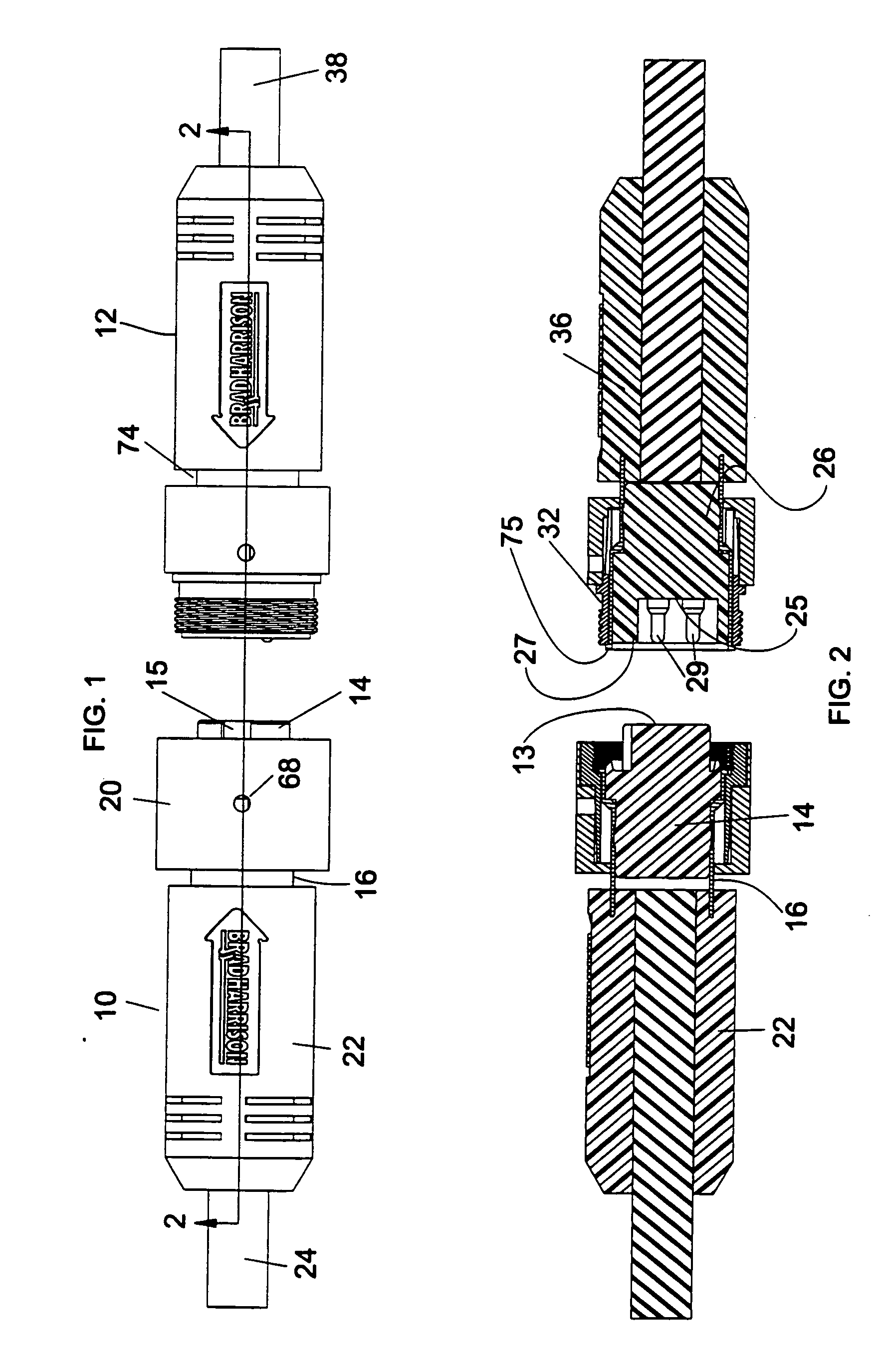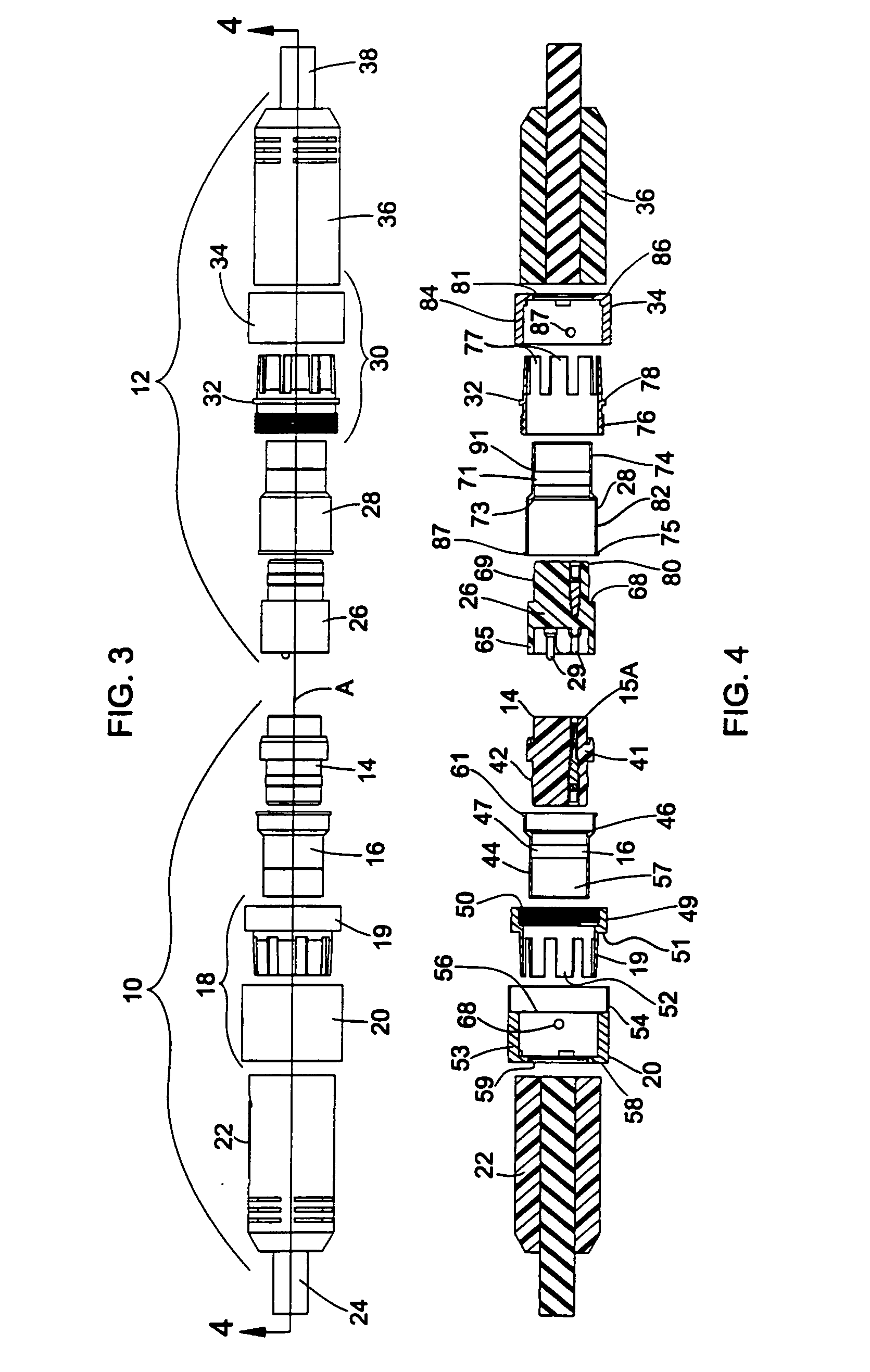Coaxial electrical connector for hazardous locations
a technology of hazardous locations and electrical connectors, applied in the direction of coupling devices, coupling parts engagement/disengagement, coupling device connections, etc., can solve the problems of difficult or impossible to manually disconnect the connectors, difficult or impossible to uncouple the couplers, and commercial quick disconnect connectors are not readily usable, etc., to eliminate or reduce the possibility of accidental separation
- Summary
- Abstract
- Description
- Claims
- Application Information
AI Technical Summary
Benefits of technology
Problems solved by technology
Method used
Image
Examples
Embodiment Construction
[0040] Referring first to FIG. 1, reference numeral 10 generally designates a female electrical connector adapted to be connected to a male quick-connect electrical connector generally designated 12. Before turning to the details of the components, reference is made to FIGS. 3 and 4 to identify the major components of the connectors 10, 12. Turning first to the female connector 10, it includes a female insert 14 of non-conducting material which is secured within an insert housing 16. As seen in FIG. 4, individual connecting elements 15A are embedded in the individual sockets 41 of insert 14. Surrounding the insert housing 16 is a ratchet assembly generally designated 18 and comprising a female coupler 19 and an outer housing generally designated 20. The distal end of the insert housing 16 extends to the rear (i.e. leftward in FIGS. 1 and 3) and is embedded in a connector overmold 22 which also encompasses the adjacent end of the cord or cable 24 to which the connector 10 is attached...
PUM
 Login to View More
Login to View More Abstract
Description
Claims
Application Information
 Login to View More
Login to View More - R&D
- Intellectual Property
- Life Sciences
- Materials
- Tech Scout
- Unparalleled Data Quality
- Higher Quality Content
- 60% Fewer Hallucinations
Browse by: Latest US Patents, China's latest patents, Technical Efficacy Thesaurus, Application Domain, Technology Topic, Popular Technical Reports.
© 2025 PatSnap. All rights reserved.Legal|Privacy policy|Modern Slavery Act Transparency Statement|Sitemap|About US| Contact US: help@patsnap.com



